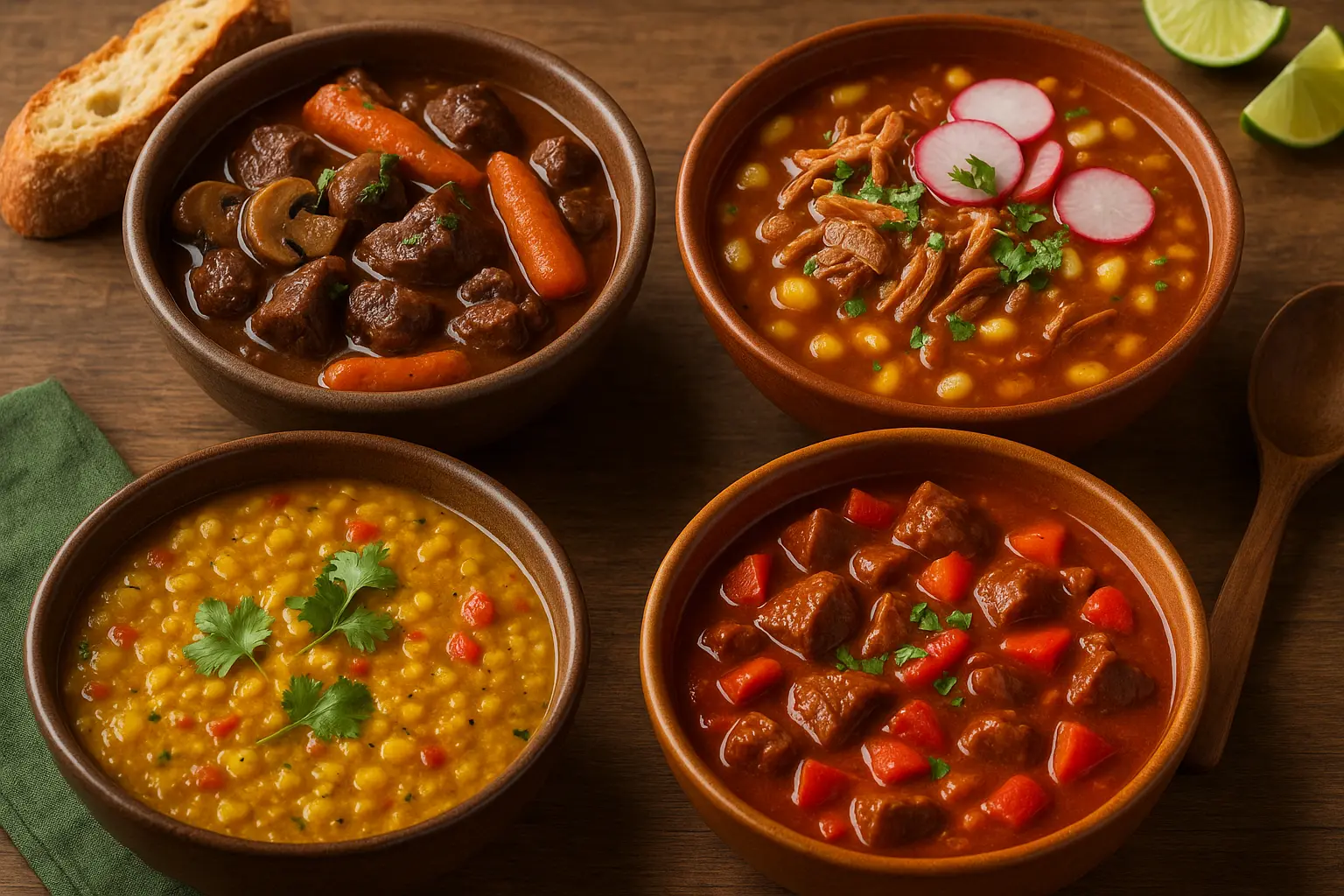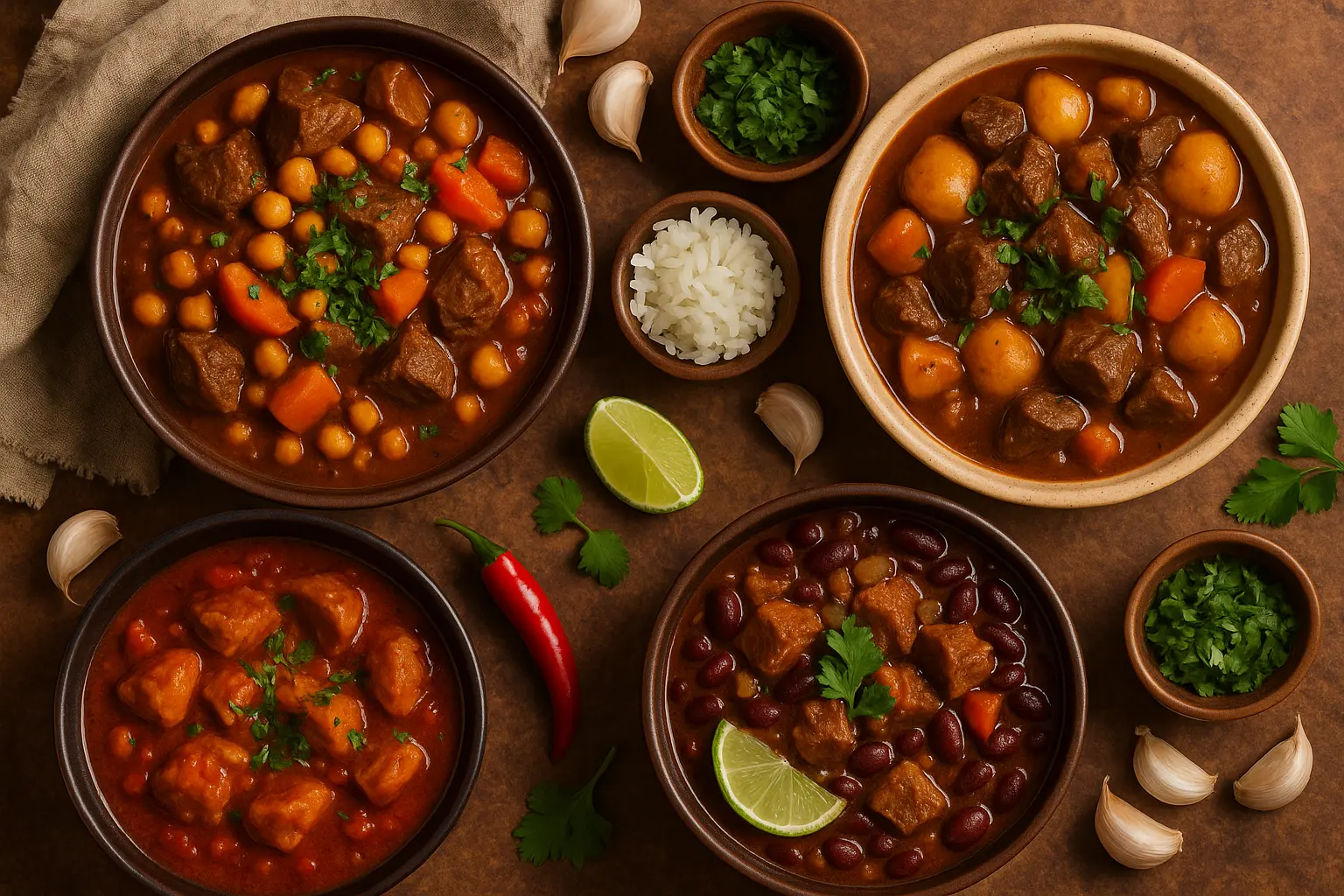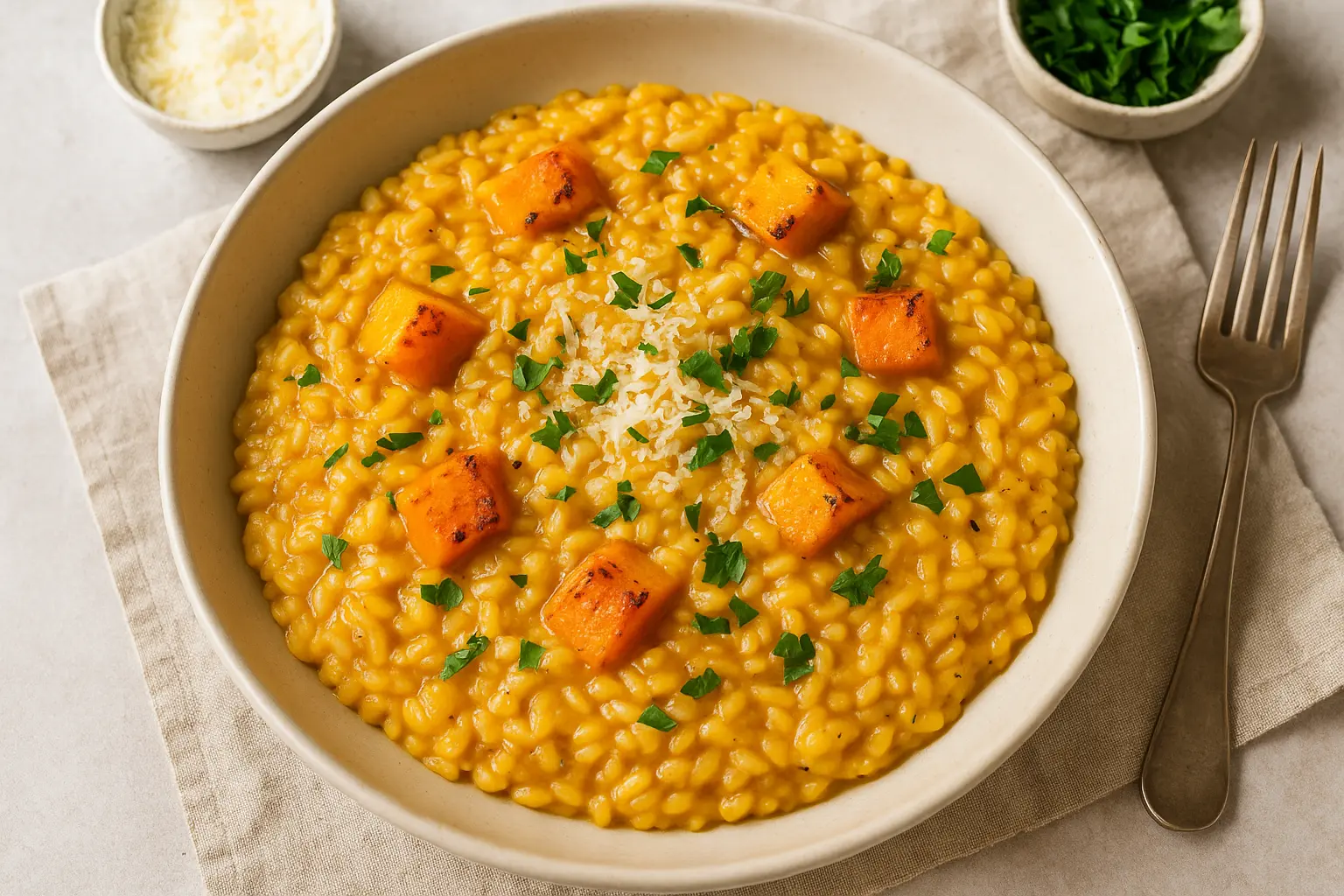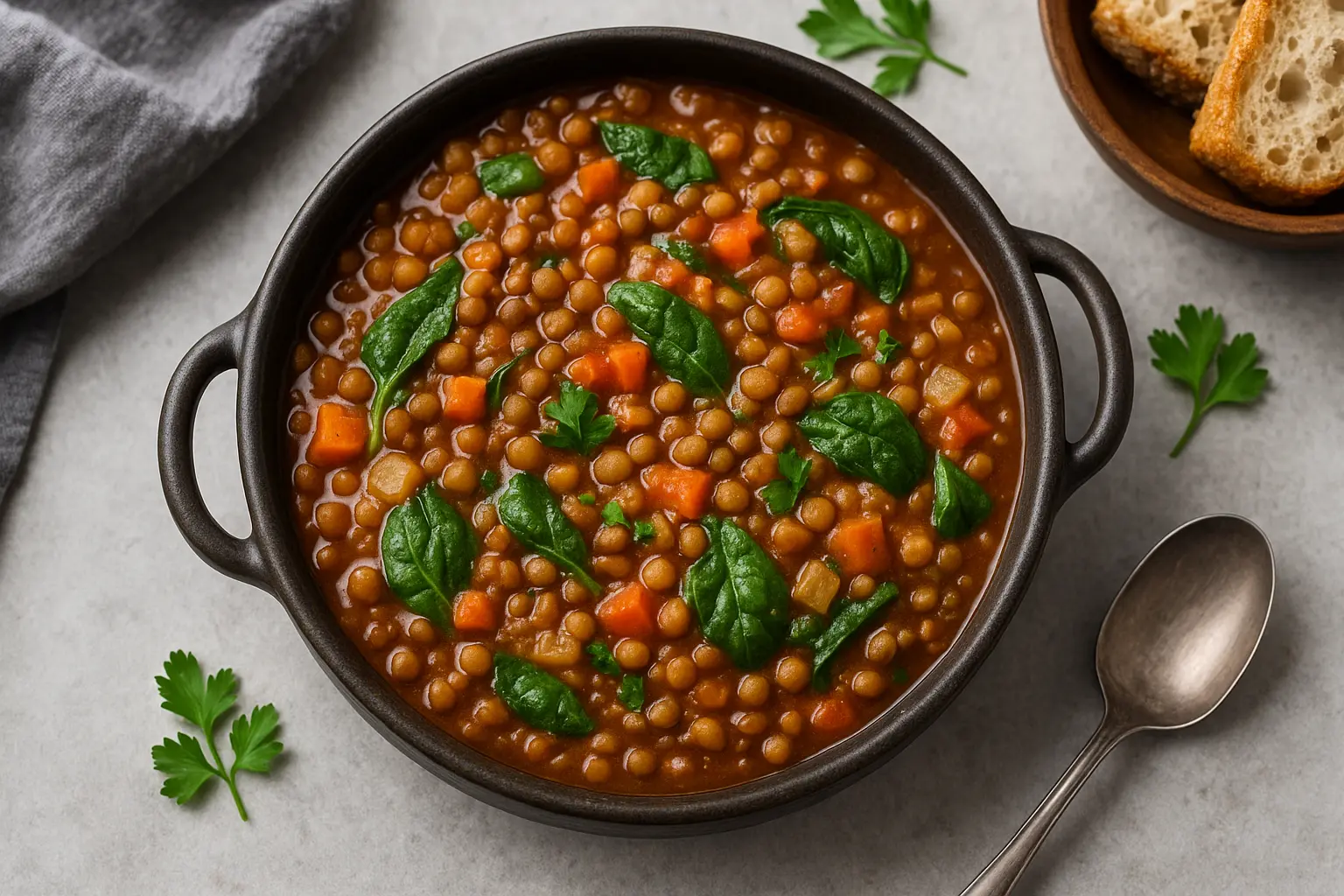As the temperature drops, there’s nothing quite like the comfort of a warm stew simmering on the stove. Stews are more than just meals; they’re experiences—aromas filling the kitchen, bowls warming cold hands, and flavors carrying cultural stories from across the world. Each cuisine adds its own twist: spices in India, red wine in France, maize hominy in Mexico, or paprika in Hungary.
This blog takes you on a culinary journey through global winter stews—a mix of traditional recipes and modern variations you can easily recreate at home. Whether you’re craving rich beef, nourishing legumes, or plant-based options, you’ll find a cozy bowl suited for every taste.

Chapter 1: The Universal Appeal of Stews
Stews are universally loved for three main reasons:
- Nourishment and Warmth: Slow-simmered dishes lock in nutrition while delivering comfort.
- Flexibility: They can adapt to whatever ingredients you have—meat, beans, seasonal vegetables.
- Cultural Identity: Each stew tells a story, tied to climate, agriculture, and tradition.
From the French countryside to bustling Moroccan souks, stews bridge geography and generations. They remind us of family dinners, winter celebrations, and the joy of slowing down with food.
Chapter 2: European Classics
2.1 French Beef Bourguignon
A dish that symbolizes rustic French cooking, boeuf bourguignon combines beef, red wine, mushrooms, carrots, and herbs. The long simmer transforms humble ingredients into a luxurious meal, served with crusty bread or creamy mashed potatoes.
Key Flavor Profile: Red wine reduction, earthy mushrooms, garlic, thyme.
Tips:
- Use a full-bodied red like Burgundy.
- Cook low and slow for tender beef.
2.2 Hungarian Goulash
Originating in Hungary, goulash is more than a beef stew; it’s a celebration of paprika. The combination of sweet and hot paprika defines its deep red color and smoky warmth. Traditionally, it’s thickened with potatoes and paired with rustic bread or noodles.
Key Flavor Profile: Paprika-rich broth, beef, onions, caraway seeds.
2.3 Irish Lamb Stew
Nothing beats a bowl of Irish stew on a cold evening. Traditionally made with lamb or mutton, potatoes, carrots, and onions, it’s a hearty, simple dish. The natural starch from the potatoes thickens the broth, creating a wholesome one-pot meal.
Key Flavor Profile: Mild, earthy lamb, root vegetables, parsley.
Chapter 3: Mediterranean Comfort
3.1 Moroccan Tagine
While technically a slow-cooked stew rather than a soup, the Moroccan tagine embodies comfort with layers of spice—cinnamon, cumin, ginger, saffron—combined with lamb, chicken, or chickpeas. Dried fruits like apricots or prunes add sweetness, balanced by almonds and fresh herbs.
Serving Suggestion: Serve with fluffy couscous.
3.2 Greek Fasolada (Bean Stew)
Known as the national dish of Greece, fasolada is a hearty bean stew simmered with tomatoes, olive oil, celery, and herbs. It’s vegetarian yet deeply satisfying, showing how legumes can stand strong in comfort cuisine.
Key Flavor Profile: Tomato base, creamy white beans, fresh herbs.
Chapter 4: Asian Stews for Soul-Warming Nights
4.1 Japanese Nikujaga
A home-cooked classic in Japan, nikujaga blends thinly sliced beef or pork with potatoes, onions, soy sauce, mirin, and dashi. The result is a sweet-salty balance that feels both light and comforting.
Cultural Note: Often described as the taste of “mother’s cooking” in Japan.
4.2 Korean Kimchi Jjigae
When winter chills set in, Koreans turn to kimchi jjigae—a fiery stew made with aged kimchi, pork belly, tofu, and gochujang (chili paste). Its tangy-spicy kick is balanced with umami depth, making it a perfect winter warmer.
Key Flavor Profile: Spicy, tangy, fermented complexity.
4.3 Indian Dal Tadka (Lentil Stew)
India’s take on stew is the humble yet powerful dal—lentils simmered with turmeric, onions, garlic, and tomatoes, finished with a sizzling tempering of cumin, chili, and ghee. It’s protein-packed, nourishing, and naturally gluten-free.
Serving Suggestion: Pair with rice or flatbreads like naan.
Chapter 5: The Americas – From Mexico to the Deep South
5.1 Mexican Pozole
Pozole is a festive stew made with hominy corn, pork (or chicken), and chili broth. Topped with shredded cabbage, radish, lime, and avocado, it’s a vibrant dish that turns winter into a fiesta.
Key Flavor Profile: Earthy hominy, smoky chilies, fresh toppings.
5.2 Brazilian Feijoada
Known as Brazil’s national dish, feijoada is a black bean stew enriched with pork, beef, and sausages. Traditionally served with rice, collard greens, and orange slices, it balances richness with freshness.
Cultural Note: Feijoada is often a communal meal, enjoyed on weekends with friends and family.
5.3 Southern Chicken & Dumplings
In the American South, nothing says comfort like chicken and dumplings—a creamy stew with tender chicken, vegetables, and pillowy dumplings. It’s hearty yet cozy, the definition of winter soul food.
Chapter 6: Vegetarian & Vegan Global Stews
- Ethiopian Misir Wat (Red Lentil Stew): Spiced with berbere, served with injera.
- Thai Green Curry Stew: Coconut milk, tofu, and seasonal vegetables.
- Middle Eastern Chickpea Stew: With tomatoes, cumin, coriander, and lemon.
- Italian Ribollita: Tuscan bread-and-bean stew that’s perfect for repurposing leftovers.
These stews prove you don’t need meat to enjoy bold, hearty flavors.
Chapter 7: Cooking Methods That Elevate Stews
- Slow Cooker / Crockpot: Perfect for hands-off cooking.
- Instant Pot / Pressure Cooker: Cuts down hours of simmering into minutes.
- Stovetop: Classic method for layering flavors.
- Oven-Baked Casserole Stews: Even heat for depth of flavor.
Chapter 8: Tips for Perfecting Any Stew
- Brown your meat or vegetables first for caramelized flavor.
- Layer spices gradually instead of all at once.
- Use quality stock—homemade if possible.
- Don’t rush: Stews taste better the next day as flavors meld.
- Finish with freshness: Herbs, lemon juice, or yogurt brighten heavy dishes.
Chapter 9: Meal Prep & Storage
Stews are ideal for batch cooking. Make a large pot, refrigerate for 4–5 days, or freeze in portions for up to 3 months. Some stews, like curry or chili, taste even better reheated.
Conclusion: A Global Bowl of Warmth
From the French countryside to the bustling streets of Seoul, from the warmth of Mexican pozole to the spice of Indian dal, winter stews unite cultures under one theme—comfort. They’re meals that warm the body, nourish the soul, and tell stories of resilience and community.
So this winter, let your kitchen become a global hub. Try a new stew each week, experiment with spices, and share steaming bowls with family and friends.
Leave a comment
Your email address will not be published. Required fields are marked *




















